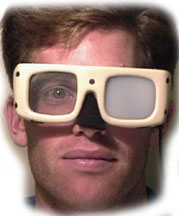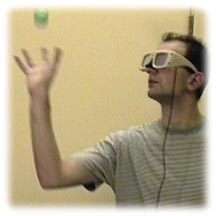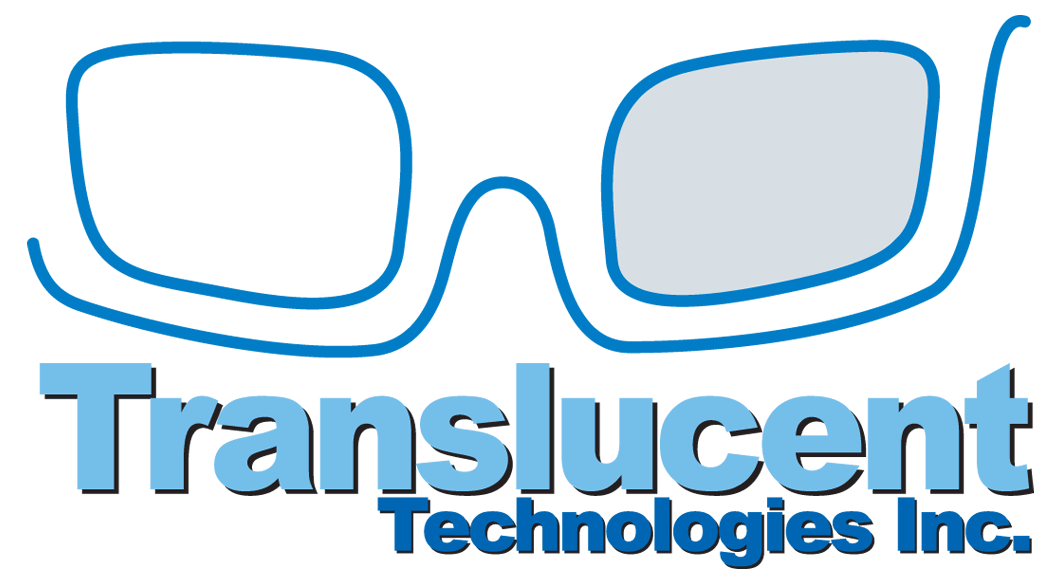|
|
|
 PLATO
Visual Occlusion Spectacles
PLATO
Visual Occlusion Spectacles
 Translucent Technologies is pleased to announce production
of its latest model of PLATO (Portable Liquid-Crystal Apparatus for Tachistoscopic
Occlusion). PLATO is a spectacle mounted visual occlusion device which
allows an experimenter accurately to control the timing of presentation of
visual information to an experimental subject. Uses of the device encompass a
wide range of topics in visual perception and psychomotor behaviour research.
Translucent Technologies is pleased to announce production
of its latest model of PLATO (Portable Liquid-Crystal Apparatus for Tachistoscopic
Occlusion). PLATO is a spectacle mounted visual occlusion device which
allows an experimenter accurately to control the timing of presentation of
visual information to an experimental subject. Uses of the device encompass a
wide range of topics in visual perception and psychomotor behaviour research.
Description and
Operating Principle
The PLATO
lenses are constructed with specially designed liquid crystal cells, powered by
an electrical field applied across the two glass plates. Under command of a
switching or electronic timing circuit, the experimenter is able to change the
state of the cells from transparent to translucent, or light scattering. In the
Open state, looking through the lenses is like looking through clear glass. In
the Closed state, the spectacle lenses scatter light and thus take on a
translucent milky texture, which prevents the subject from perceiving visual
information. The subject's eye nevertheless remains illuminated and does not
have to re-adapt to light when re-opened. The lenses for each eye can be opened
or closed independently. The response time is approximately 1 ms to open and
3-5 ms to close.
Power is supplied to the spectacles by
a specially designed compact battery operated power supply, which fits into the
subject's shirt pocket or can be clipped onto his/her belt. Alternatively,
power can be supplied externally from an AC adapter.
 Applications
Applications
The PLATO spectacles are suitable for essentially any sort
of application which requires tachistoscopic or stroboscopic presentation of
visual information. This includes research on visual perception, reading,
motion perception, neurological disorders, psychomotor coordination, motor
learning, training, conspicuity testing, product recognition, etc. The
spectacles may also be used as a viewing device for alternating field displays
in applications such as stereoscopic displays, where it is necessary to
separate the input to each eye of the test subject.
Due to their extremely high light
transmission factor, the spectacles remain effective for all applications
mentioned, even under very low lighting conditions. In addition, the spectacles are constructed without any metal
screws, thereby rendering them effective for use in MRI environments.
Options
|
|
Translucent Technologies has developed the ToTaLcontrol software package for providing independently-driven logical TTL signals from the parallel port of a PC. |
|
|
Switching signals for each lens are currently supplied via an external cable connection. Although remote wireless switching is feasible, Translucent Technologies does not currently offer this capability. |
Back to the Translucent
Technologies home page.
